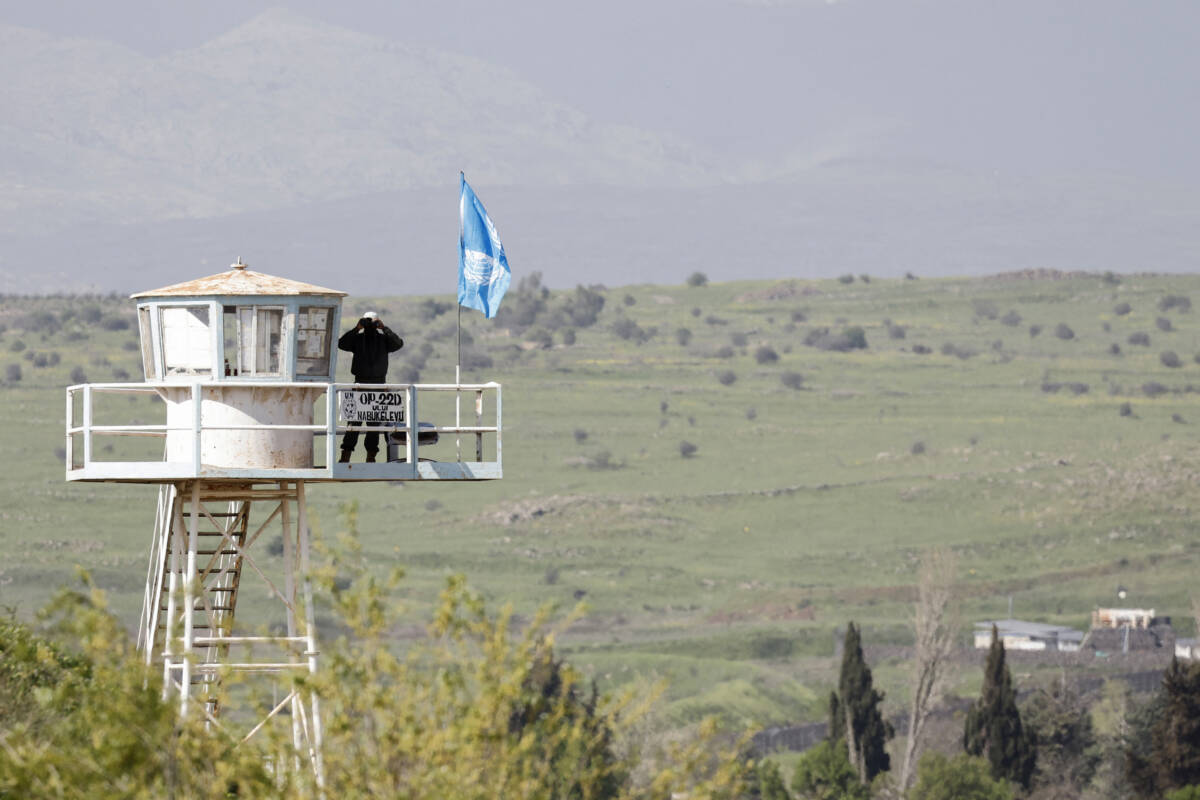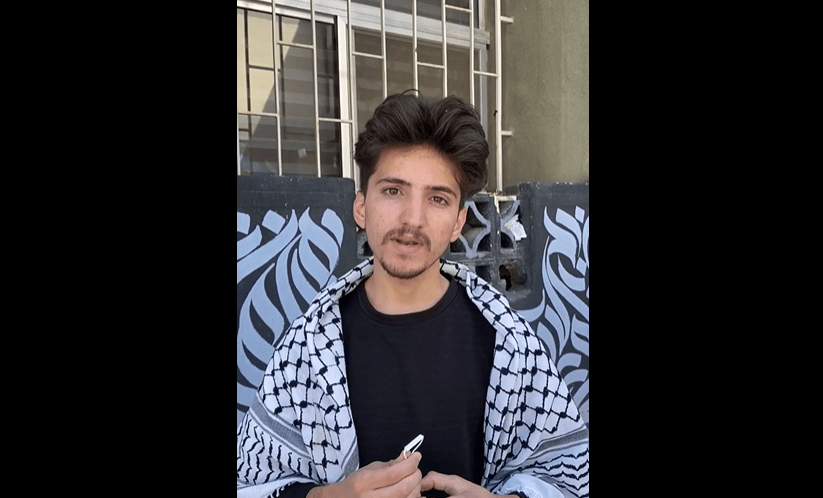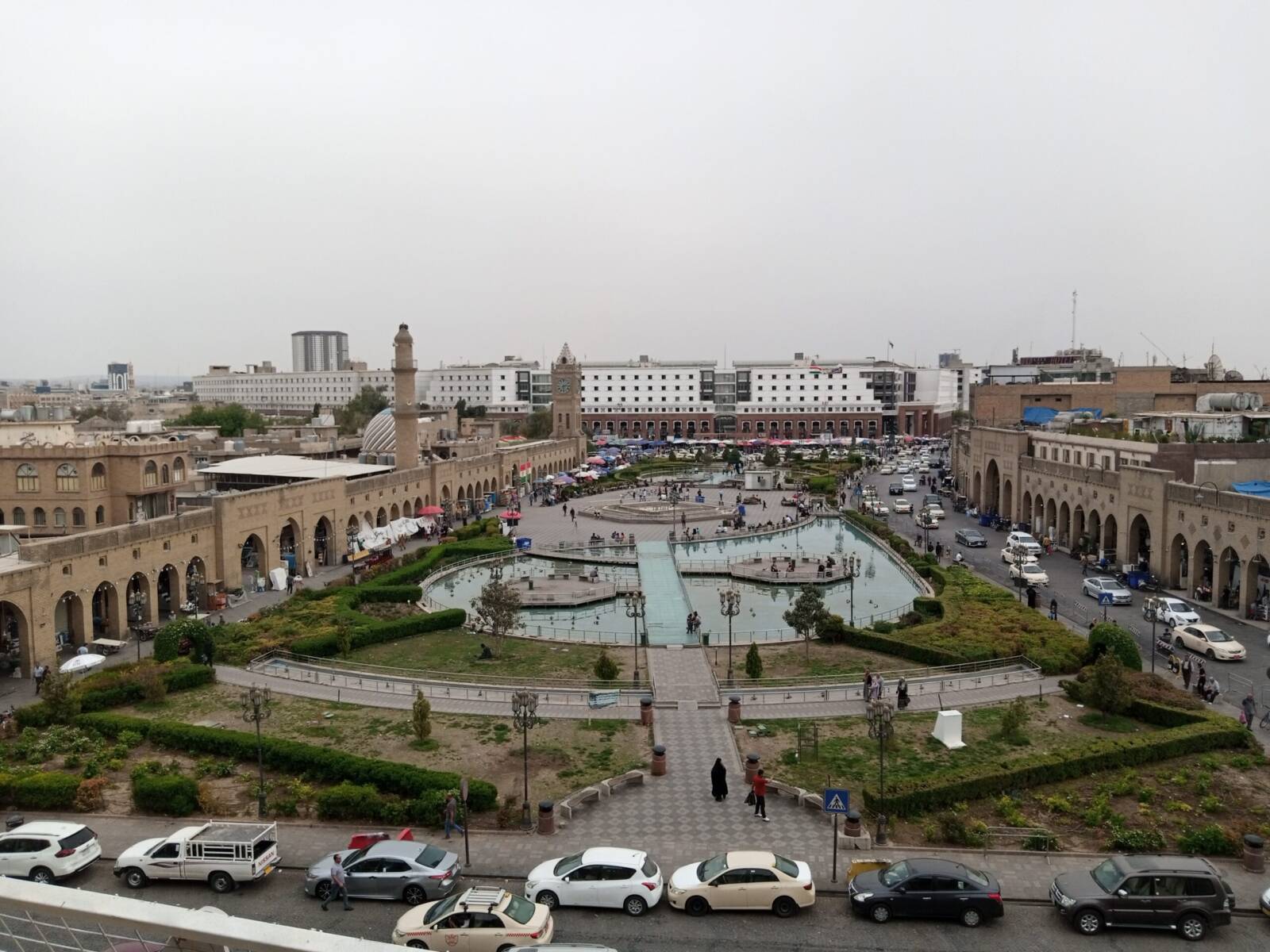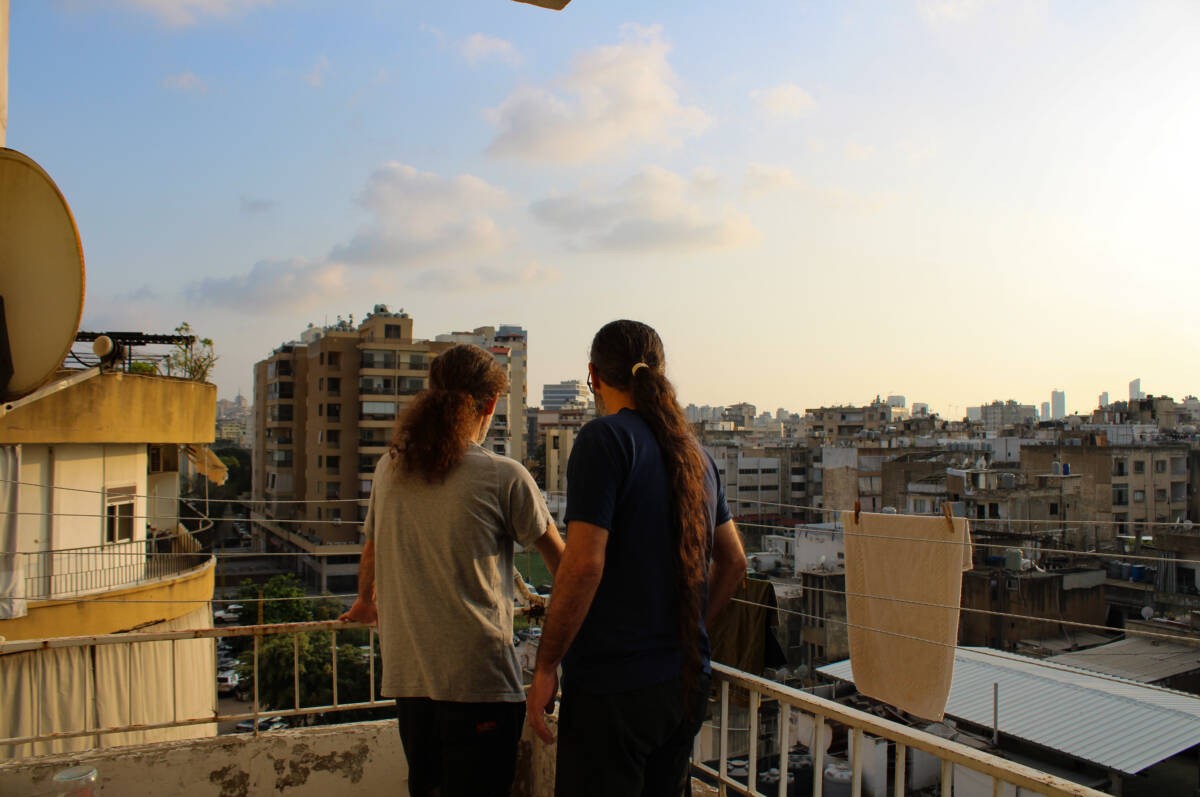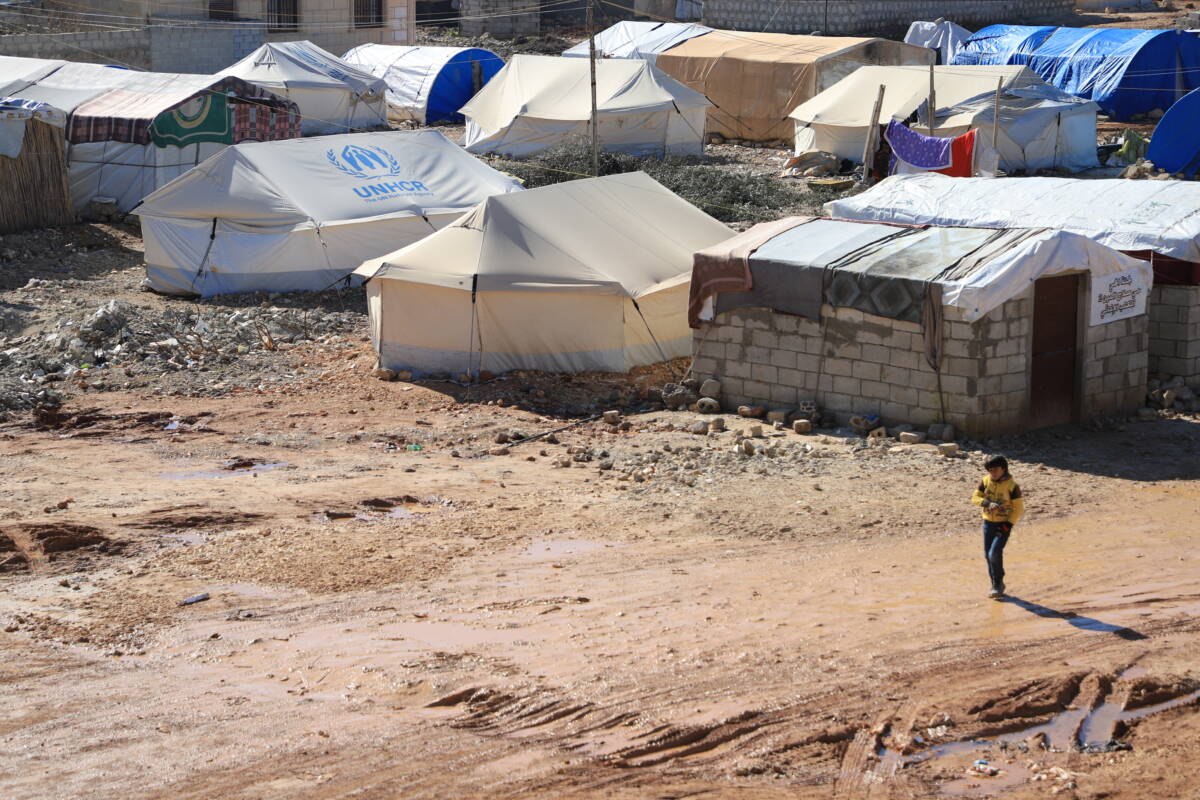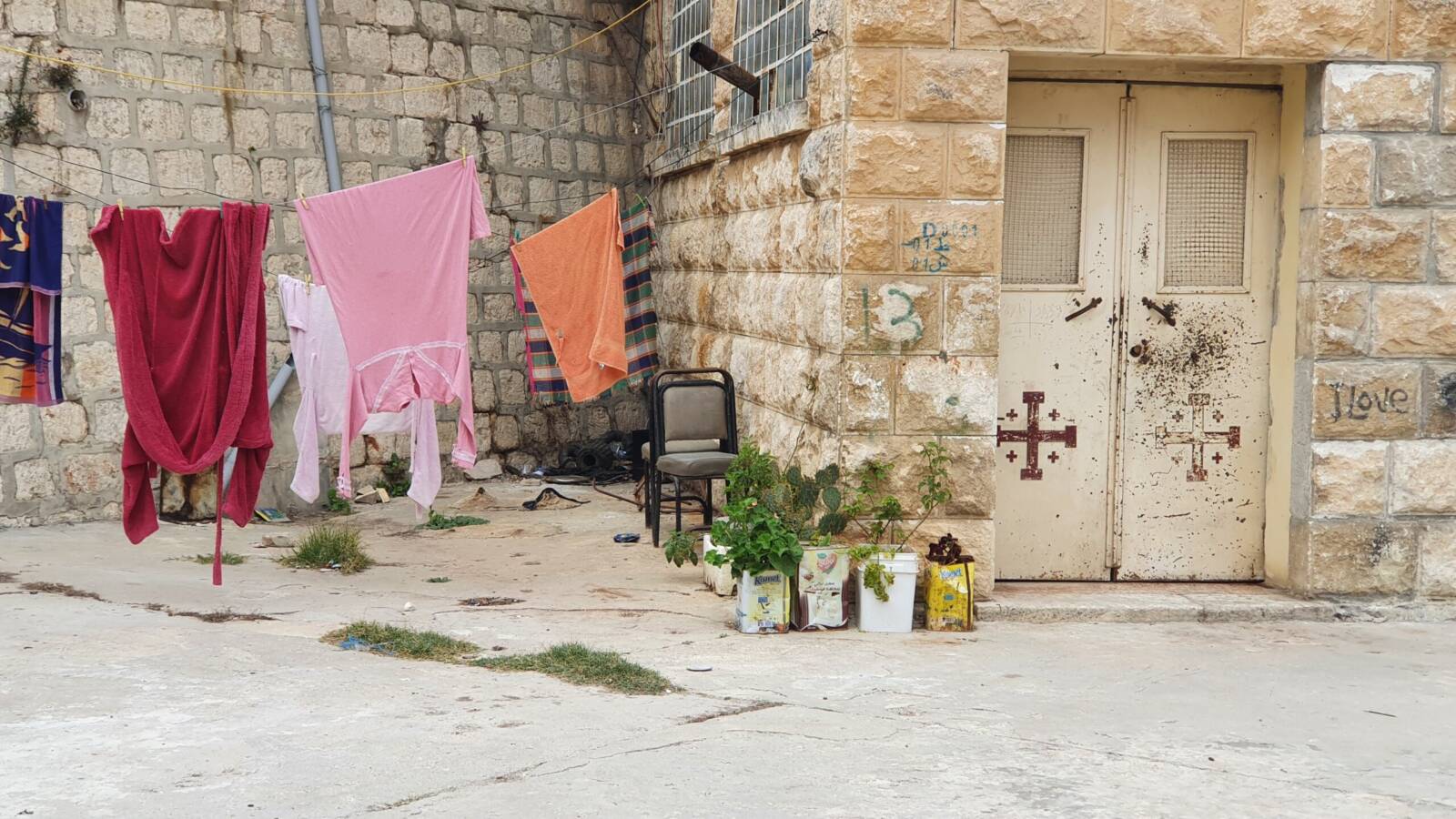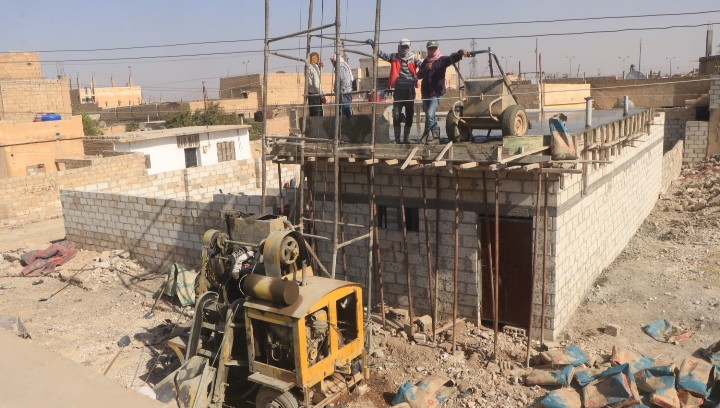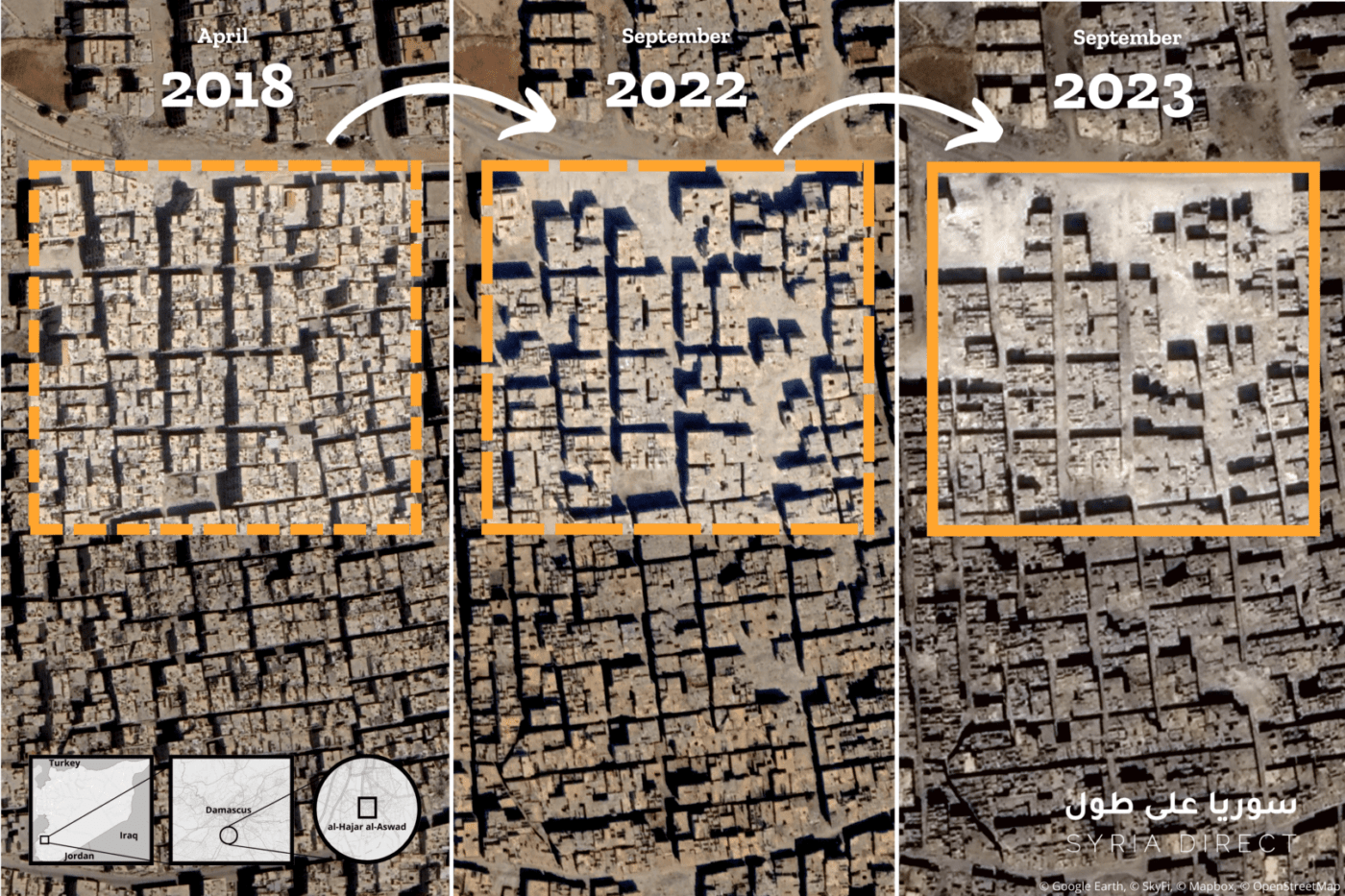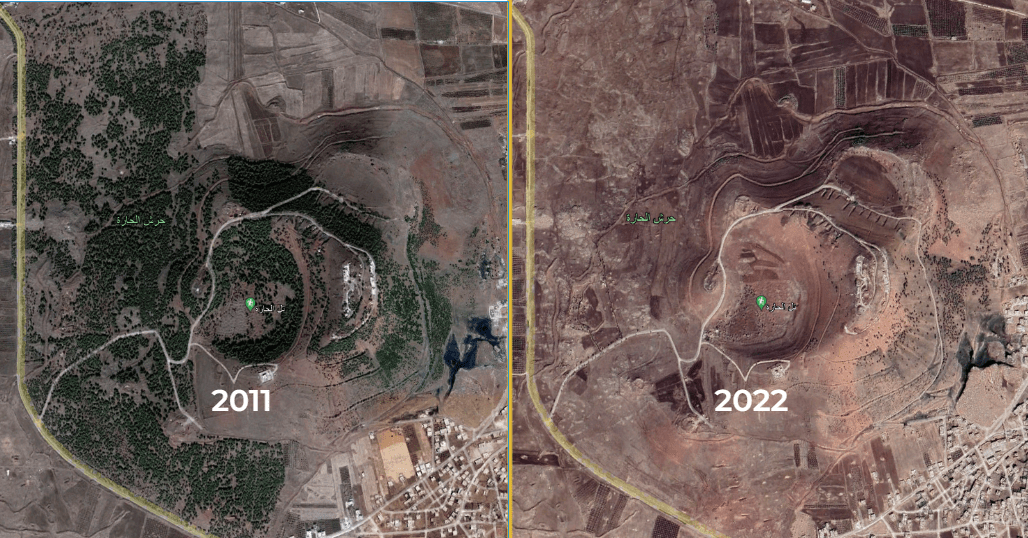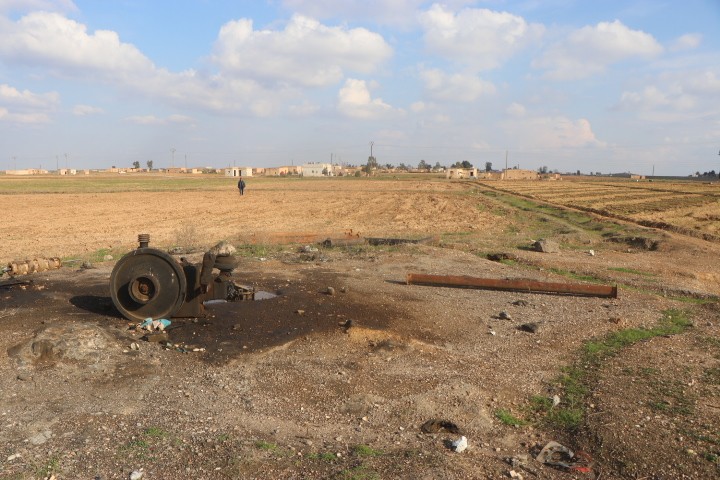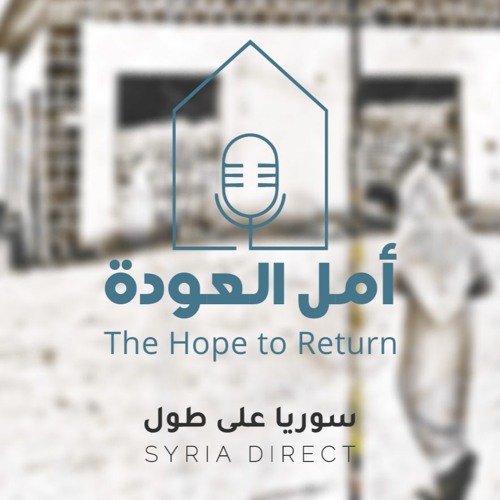




Natacha Danon2024-04-24T18:54:36+02:00April 24, 2024|
Ayloul Saad, Ammar Hamou2024-04-24T01:28:35+02:00April 23, 2024|
Sozdar Muhammad2024-04-22T20:25:00+02:00April 22, 2024|
Hanna Davis2024-04-18T21:49:08+02:00April 17, 2024|
Under the axe: The fall of Daraa’s forests and fruit trees
Trees have fallen under the axe in Daraa and across Syria since the spring 2011 revolution, cut for wood to sell or use as an alternative to heating and cooking gas during war, siege and economic crises. Since 2020, however, logging has increased to include fruit-bearing trees on private farmland and within cities.
Fuel crisis and weak subsidies threaten Syria’s northeastern bread basket
Farmers in northeastern Syria are reducing the amount of land they cultivate or relying on the rain for irrigation as weak fuel subsidies and high costs make farming increasingly unprofitable.
Incomplete awareness: Syria’s primary school curricula lack information on future water crisis
Facing the impacts of climate change and the fallout of a war that turned water into a weapon, what are Syria’s children learning about the dangers of the water crisis they face?
Syrians arrested amid Gaza protests face deportation from Jordan
Atia Abu Salem, a Syrian refugee in Jordan arrested on his way to a pro-Gaza demonstration this month, is facing deportation. The families of “many Syrians” among the more than 1,500 people detained amid recent protests are keeping quiet, afraid of “escalation.”
Syrians at a loss after Erbil stops issuing visas
Erbil’s April 4 decision to stop issuing visas to Syrians has been a disaster for those for whom the Kurdistan Region of Iraq was a safe haven from conscription or a place to reunite with family members after years of separation.

